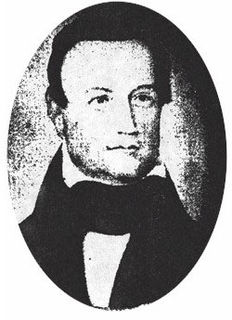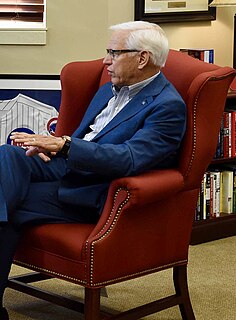Related Research Articles

The Illinois General Assembly is the legislature of the U.S. state of Illinois. It has two chambers, the Illinois House of Representatives and the Illinois Senate. The General Assembly was created by the first state constitution adopted in 1818. As of 2022, the current General Assembly is the 102nd.

John Lourie Beveridge was the 16th Governor of Illinois, serving from 1873 to 1877. He succeeded the recently elected Richard J. Oglesby, who resigned to accept a Senate seat. Beveridge previously served in the Army during the American Civil War, becoming colonel of the 17th Illinois Cavalry in 1864. He was brevetted to brigadier general in March 1865.

John Marshall Hamilton was the 18th Governor of Illinois, serving from 1883 to 1885. Born in Union County, Ohio, Hamilton became interested in politics at a young age, joining the Wide Awakes when he was thirteen and the Union Army four years later. After graduating from Ohio Wesleyan University he studied law and was admitted to the bar. A notable attorney in Bloomington, Illinois, Hamilton was elected to the Illinois Senate in 1876. He served there until 1881, when he was elected Lieutenant Governor of Illinois on a ticket with Shelby Moore Cullom. When Cullom resigned after election to the United States Senate, Hamilton became Governor of Illinois. He was not selected as a candidate for re-election, but did serve that year as a delegate to the 1884 Republican National Convention. He spent the rest of his life as an attorney in Chicago, where he died in 1905.

The Government of Illinois, under Illinois' Constitution, has three branches of government: Executive, Legislative, and Judicial. The State's executive branch is split into several statewide elected offices, with the Governor as chief executive and head of state, and has numerous departments, agencies, boards and commissions. Legislative functions are granted to the General Assembly, a bicameral body consisting of the 118-member House of Representatives and the 59-member Senate. The judiciary is composed of the Supreme Court of Illinois and lower courts.

William Lee Davidson Ewing was a politician from Illinois who served partial terms as the fifth governor of the state and as U.S. Senator.

The 1908 and 1909 United States Senate elections were held to determine the winners of the 31 class 3 Senate seats up for election, as well as various special elections to fill vacancies or confirm appointments.

Silas Hemenway Jennison was an American Anti-Masonic and Whig politician who served as Vermont's 11th lieutenant governor and 14th governor of Vermont – the first born in the state.

Patrick Noble was the 57th Governor of South Carolina from 1838 until his death in 1840.
William or Bill Davidson may refer to:

Robert Walter Kustra is an American politician and academic administrator who served as the Lieutenant Governor of Illinois from 1991 to 1998 and the President of Boise State University from 2003 to 2018.

The Treasurer of Illinois is an elected official of the U.S. state of Illinois. The office was created by the Constitution of Illinois.

A general election was held in the U.S. state of Illinois on November 4, 2014. All of Illinois' executive officers were up for election as well as a United States Senate seat, and all of Illinois' eighteen seats in the United States House of Representatives. Primary elections were held on March 18, 2014.
Alexander M. Jenkins was an American politician. Between 1834 and 1836 he served as Lieutenant Governor of Illinois.
Stinson H. Anderson was an American politician. Between 1838 and 1842 he served as Lieutenant Governor of Illinois.

Two United States Senate elections were held in Illinois on March 26, 1913. The two elections were interconnected through a compromise made to elect a Democrat in the regular election and a Republican in the special election.

Elections were held in Illinois on Tuesday, November 5, 1940.
References
- ↑ "Rosters of Government Officials" (PDF), 2011-2012 Illinois Blue Book, Illinois Secretary of State Communications Department, February 2012
- ↑ Illinois. General Assembly. House of Representatives, ed. (1838). Journal of the House of Representatives of the General Assembly of the State of Illinois. Vol. 1. State Printers. p. 19.
- ↑ Linder, Usher F. (1879). Reminiscences of the Early Bench and Bar of Illinois. Chicago Legal News Company. pp. 272–73.
